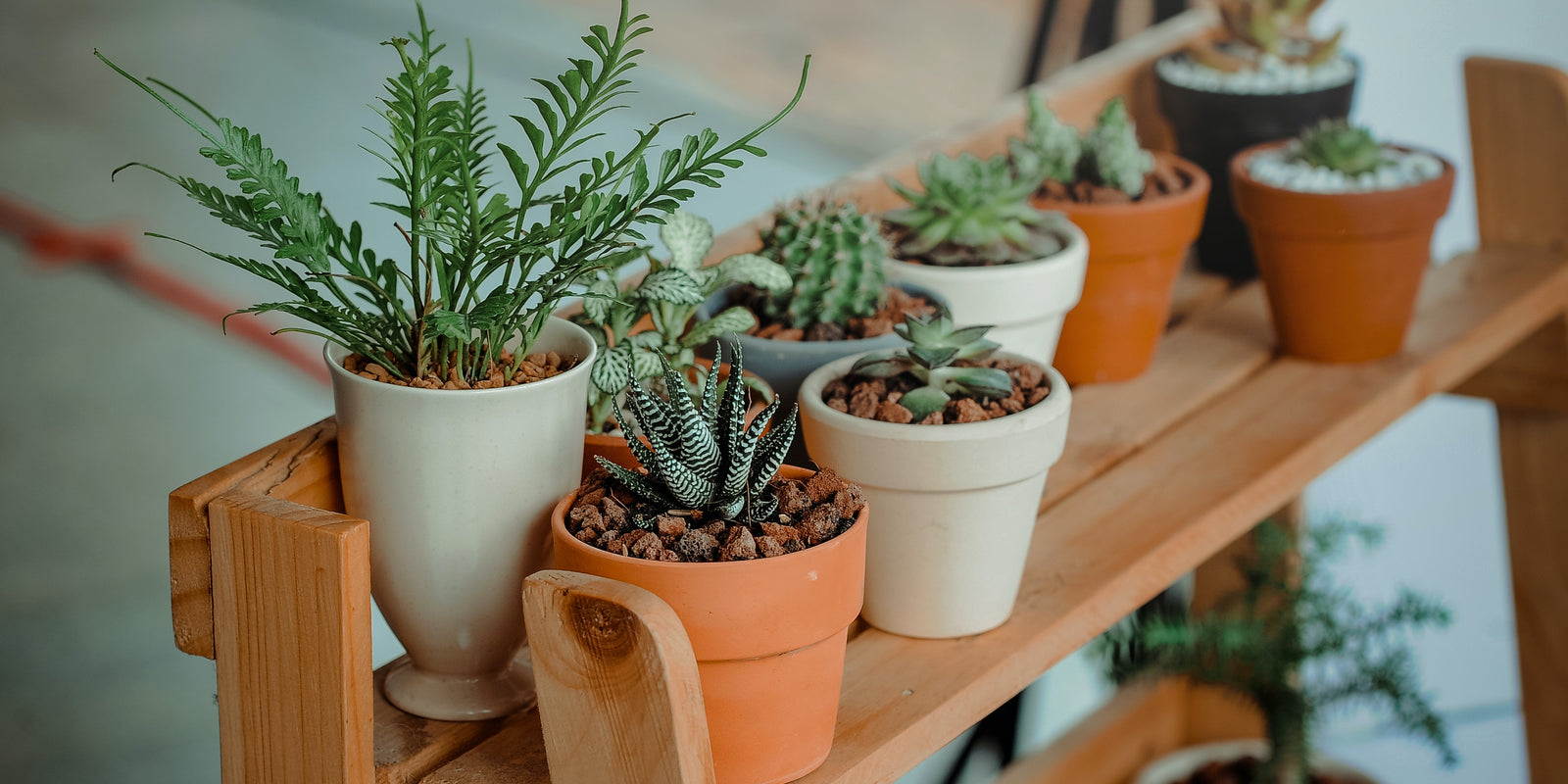Green thumbs come in all shapes and sizes. While some people are lucky enough to have a natural ability to grow plants, others struggle with keeping even the simplest houseplants alive. If you’ve ever struggled to keep your indoor or outdoor plants thriving, here are some quick tips on how to grow plants at home without having a green thumb. If you struggle with growing plants at home, don’t worry! It usually takes time and practice before anyone masters growing plants. There are many indoor plant tips and outdoor plant tips to help you keep those little green friends healthy, happy and thriving. Whether you need advice on how to grow cactus at home or tips on how to care for ferns, this article has everything you need.
Change up Your Water Regularly
While many people make the mistake of letting their houseplants dry out, others are guilty of waterlogging their plants. Over time, tap water will naturally become more and more rich in minerals and salts that plants cannot process. These impurities can build up in your plants’ soil, roots and leaves, causing them to become sickly and fragile. Depending on the type of plant, you should change the water in your pots every week or two. If you notice your plant wilting, chances are it’s thirsty. Don’t let it sit in water, though! Instead, pour out the old water and replace it with fresh, clean water.
Rotate Your Plants
If you want to keep your indoor plants healthy, you should rotate the pots every now and then. This will allow the soil in each pot to fully dry out, which will prevent the roots from rotting on the bottom. If you keep repotting your plants in the same pot, the roots will eventually become too long. This makes it difficult for the plant to take up nutrients from the soil and may cause the plant to rot. To prevent this, gently lift the plant from the pot and prune any roots that have grown past the surface of the soil. If you have a number of potted plants in one room, try rotating them every few months. You can also use different coloured pots to help you keep track of which plant goes in which pot. Don’t forget to rotate your outdoor plants too! This will help prevent pests and diseases from spreading to your other plants.
Find the Right Light For Your Plant
Most houseplants will do best if they receive lots of light. Some plants, such as aloe vera, African violets, and spider plants, will even die if they aren’t exposed to sunlight. However, there are also some houseplants that prefer to live in the shade. If you aren’t sure which type of light your plant prefers, you can easily test this out. If you live in a warm climate, you can place your plant near a sunny window. If you live in a cooler climate, you can place your plant near a sunny window for a few hours a day or use an artificial light. When the leaves of your plant turn towards the light, it’s receiving too much light. When the leaves point away from the light, it’s receiving too little light.
Don’t Over Fertilize
Many people who are new to growing plants at home overfeed their plants. They assume that more nutrients will make the plants grow more, but this isn’t always the case. Too much fertilizer can actually do more harm than good. It can cause your plants to grow too quickly, which damages the roots and leads to thin, brittle leaves. If you notice that your plants are growing too quickly, you may need to cut back on the fertilizer. If you aren’t sure how many nutrients your plants need, consult an expert at your local nursery or gardening store. They can help you find the right fertilizer for your plants based on their type and growing environment.
Don’t Forget to Add Ventilation
Most indoor plants like to be kept at a relatively humid environment. If there isn’t enough ventilation in your home, however, you can raise the humidity to dangerously high levels. This can lead to mold, which can be fatal to your houseplants. If you notice that your plants have a sticky substance coating their leaves, this is a sign that your home is too humid. You can solve this problem by opening a window or placing a fan near your plants.
Don’t Overlook the Importance of Soil Quality
When people learn how to grow plants, they often focus on caring for the leaves and flowers. However, the soil is just as important. You should try to choose soil that is rich in nutrients and minerals. If the soil you’re using is lacking in these things, you can add things like compost and fertilizer to help boost their level of nutrients. Don’t forget to water your soil regularly. While water will seep into the soil, it may not reach all the way to the bottom. This means the roots may not be fully hydrated, which can lead to wilting or drooping leaves.
Avoid Too Much Watering or Humidity
If your plants are drooping and wilting, it may be because they are sitting in too much humidity. This can happen if you don’t open a window when it’s humid outside, if you have a lot of houseplants, or if you live in a humid climate. Don’t let your plants sit in water, either. If you water your houseplants too frequently, they may develop root rot. This happens when they are sitting in water for too long. This can be especially dangerous if you are growing houseplants in pots that don’t drain. To prevent your plants from drowning in water, make sure to water your plants from the bottom. You can also choose a watering can or hose attachment that has a built-in watering nozzle that shoots water towards the bottom of the pot.


